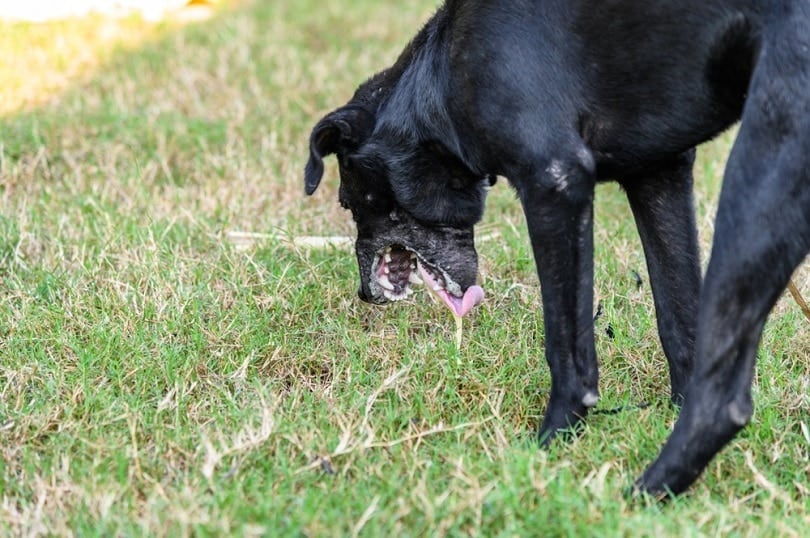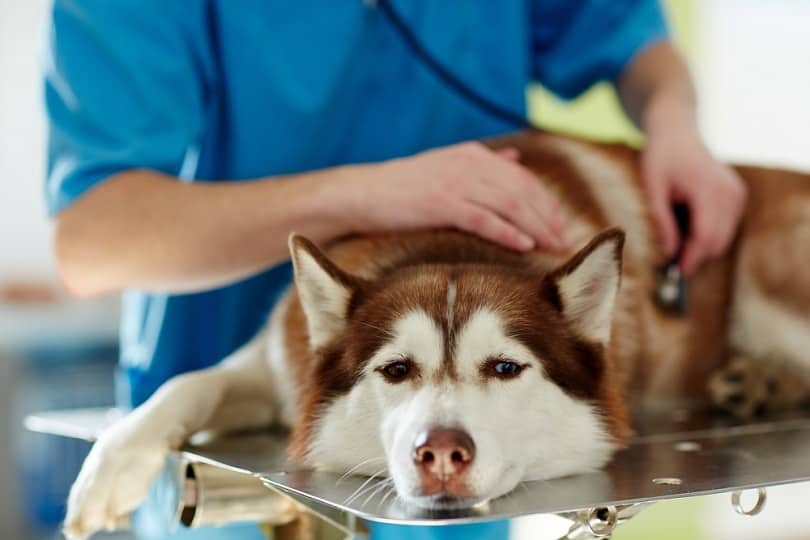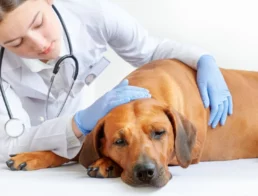Mothballs sound harmless enough, yet many people don’t know what they are. Mothballs are pesticides designed to release gas vapors slowly to repel and kill moths and their larvae. Mothballs can also be used to keep snakes, mice, and other critters away, so you can probably imagine that they’re not the safest thing to keep in a house with animals. Even eating a single mothball can cause serious side effects in dogs.
Keep reading to learn more about mothballs and what you need to do if your dog has come into contact with one.
What’s in Mothballs?
Mothballs contain one of two different active ingredients: paradichlorobenzene or naphthalene. Both chemicals are available as moth repellents in forms such as cubes, balls, cakes, powder, and flakes. The chemicals in both types can be inhaled and absorbed through the skin, stomach, or intestines.
Naphthalene is twice as toxic as paradichlorobenzene, so if you must have mothballs in your home, opt for the latter. Naphthalene is more commonly found in older mothballs as newer concentrations are made with paradichlorobenzene instead. The vapors in naphthalene are very odorous and will require much less to produce toxicity in your pets.
What Are the Signs of Mothball Poisoning?
The symptoms of mothball poisoning may depend on the type of chemical in the mothballs.
Paradichlorobenzene will have less of a poisoning effect than exposure to mothballs with naphthalene. Paradichlorobenzene exposure is tolerated in smaller doses, but any ingestion will likely cause somewhat toxic effects. These effects will be more pronounced in small dogs than in larger dogs that ate the same amount.

Symptoms of paradichlorobenzene exposure include:
- Nausea
- Vomiting
- Shaking
- Eye irritation
- Nose irritation
- Burning skin sensation
Symptoms of naphthalene exposure include:
- Vomiting
- Nausea
- Loss of appetite
- Lethargy
- Tremors
- Seizures
- Eye irritation
- Nose irritation
- Burning skin sensation
- Blood in vomit
- Brown mucus membranes
Ingesting either type of mothballs can lead to neurologic signs as well as kidney or liver damage, though it is very rare to experience these side effects with the paradichlorobenzene variety.
What Do I Do If My Dog Ate a Mothball?
If you believe your dog has ingested a mothball, you need to see your veterinarian as soon as possible. The sooner you get your pet evaluated, the better their chance at a full recovery will be.
Even eating just one naphthalene mothball can cause very serious side effects. The toxic dose will depend on both your dog’s size and the size of the mothball.
Even if you don’t believe your dog has eaten a mothball, even just being exposed to it (such as through sniffing) can cause problems.
It is important to know what active ingredients are in the mothballs your dog ate. If it’s been a while since you purchased the mothballs, you can try this trick to determine which chemical was used in their formulation.
Mix three tablespoons of table salt into a half cup of lukewarm water. Add a mothball to the solution. If the mothball floats, it was made with naphthalene. If it sinks, it was made with paradichlorobenzene.
What Will My Vet Do About Mothball Ingestion?
If it has been an hour or two since ingestion, your vet may be able to induce vomiting at the clinic. Do not, under any circumstances, attempt to induce vomiting at home unless under the advice of your vet.
Once your vet knows that no paradichlorobenzene or naphthalene is left in your dog’s system, further treatment will include washing out its stomach and administering activated charcoal to reduce the absorption of the mothball chemical by the gastrointestinal tract, or IV therapy and medication to prevent your pup from vomiting more and seizing as well as to prevent any damage to the gastrointestinal tract or liver.
Your vet will likely perform bloodwork to determine if your dog has anemia. If it does, a blood transfusion and medications will be necessary.

Final Thoughts
Mothballs, when used as directed, are entirely safe to have in your home. They are meant to be stored in closed, airtight containers so even the cleverest dogs won’t be able to wiggle their way in.
If you suspect your pooch has come into contact with a mothball, get it to the vet as soon as possible. Even if you have the less toxic paradichlorobenzene variety in your home, ingesting just one can cause serious side effects that we know you don’t want to expose your dog to.
Featured Image Credit: Shutterstock














